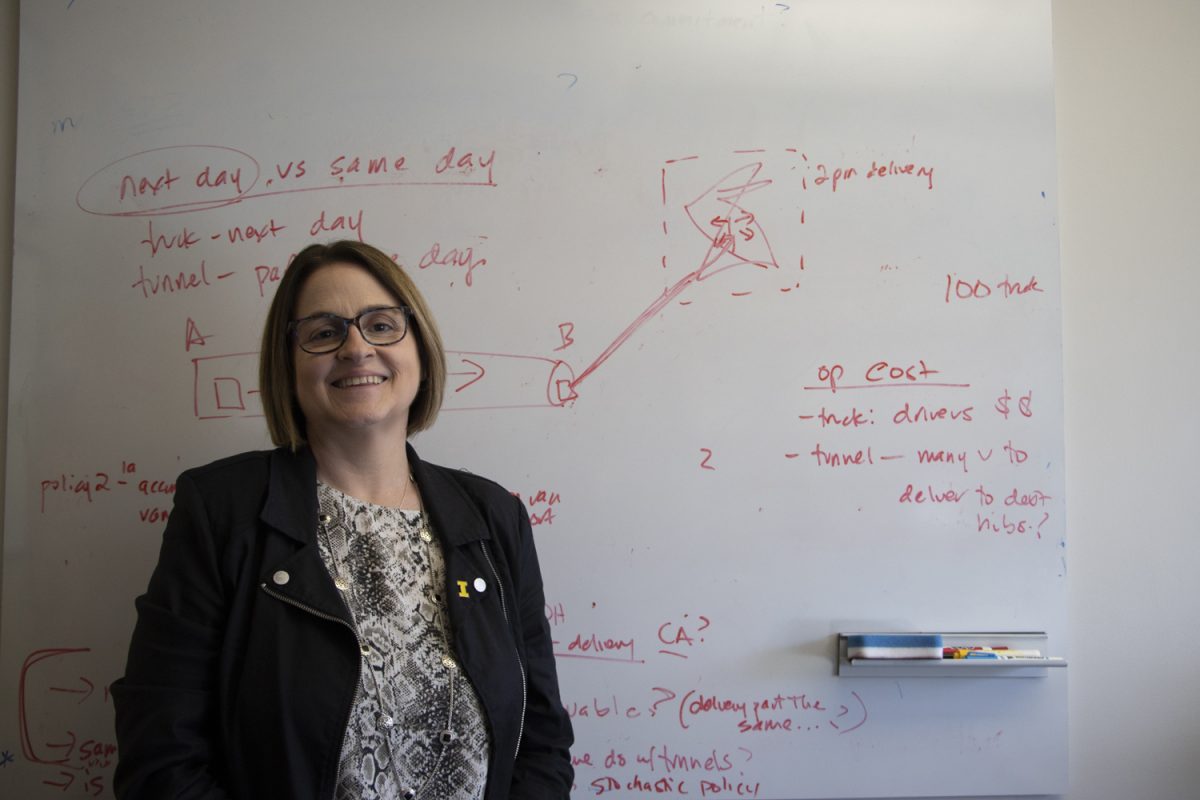Researchers at the University of Iowa Tippie College of Business are the first in the nation to assess the efficiency of driving on package delivery routes.
The research found that if drivers take less time to park their vehicles and deliver multiple packages on their delivery routes, they can potentially increase their efficiency by up to 50 percent.
UI professor Ann Campbell and Tippie Dean Barry Thomas worked alongside former Ph.D. student Sara Reed — who is now a professor in the school of business at the University of Kansas — to measure how the time it takes for a delivery driver to park and distribute their packages.
This issue is especially prominent in urban areas with high levels of traffic and limited space for parking, which the study found can result in drivers looking for a spot for around nine minutes.
“We have these two routing problems: Where should the vehicle go park, and where should the delivery person walk to?” Reed said. “There’s these two echelons that we’re considering, and the focus of the paper is understanding how parking time impacts these decisions, and how it influences the optimal decisions in this process.”
According to a CNBC article from 2023, Amazon was delivering an average of 1.8 billion units to Amazon Prime members the same or the next day alone. According to Capital One Shopping, in 2022, Amazon processed a total 4.79 billion deliveries in the U.S., averaging 13.13 million deliveries a day.
A mathematical model called optimization was used to calculate the optimal solution for this parking issue since online deliveries have become such a crucial part of consumers’ lives, Campbell and Thomas said.
“We were able to show in a simple setting the more efficient you are in the routing and delivery service, the less congestion you’re creating because each vehicle is more efficient in terms of who it can serve,” Thomas said. “Ultimately, that should mean that you have fewer vehicles that need to be on the road doing these deliveries.”
By having delivery vans park in a more central location and deliver multiple packages in one stop, Thomas and Campbell said this could increase driver efficiency by up to 50 percent, which is significant.
Campbell said she hopes to see delivery services such as UPS, Amazon, and FedEx implement the results of the study when considering delivery efficiency in the future.
RELATED: UI Tippie researchers find lack of workplace support causes turnover in companies
“A lot of companies are kind of private about what they’re actually doing, so I don’t know exactly how much they’re seeing, but we could be probably more aggressive about that and try to do that more,” Campbell said.
The parking issue was only considered because it accidentally popped up as a question when Reed was working on her dissertation about autonomous vehicle delivery, she said.
Drones and reserved parking are also being explored as viable solutions going forward, in addition to self-driving vans that could drop delivery workers off and pick them up at another spot.
“You probably still need a delivery person, but they don’t have to walk back to a parked vehicle,” Thomas said. “If we could actually do that, we could do the same amount of work in 50 percent of the time, and that is an incredible benefit.”



